Recruiting Rosie: Ford Motor Company & Wartime Womanpower
When the United States entered World War II, there were immediate voids in the workforce left by those leaving to fight abroad. Women across the country heard a call to action and stepped in, taking on new roles previously held only by men.
Popularized by the song Rosie the Riveter, Rosie became the fictional face of these early wartime women workers. Rosie was feminine, yet strong and powerful, changing the societal stigmas against working women and drawing interest in wartime work.
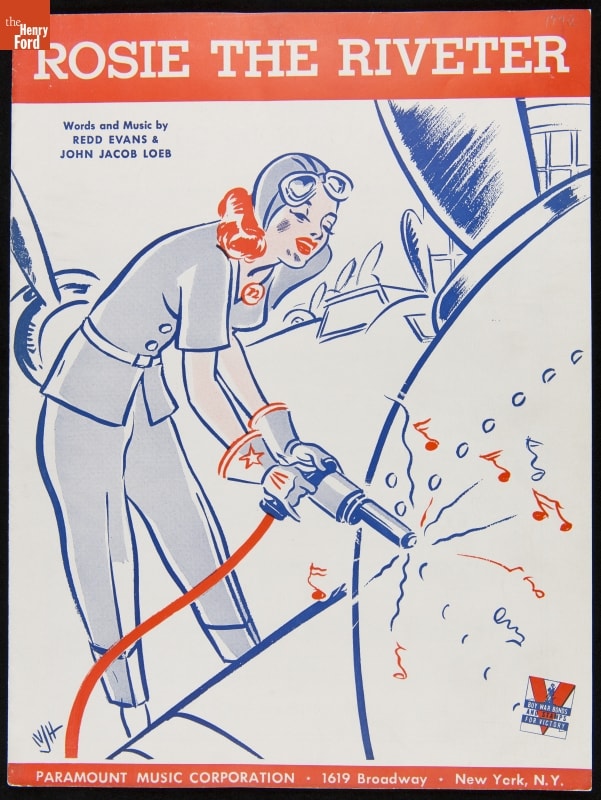
"Rosie the Riveter" sheet music, 1942. / THF290068
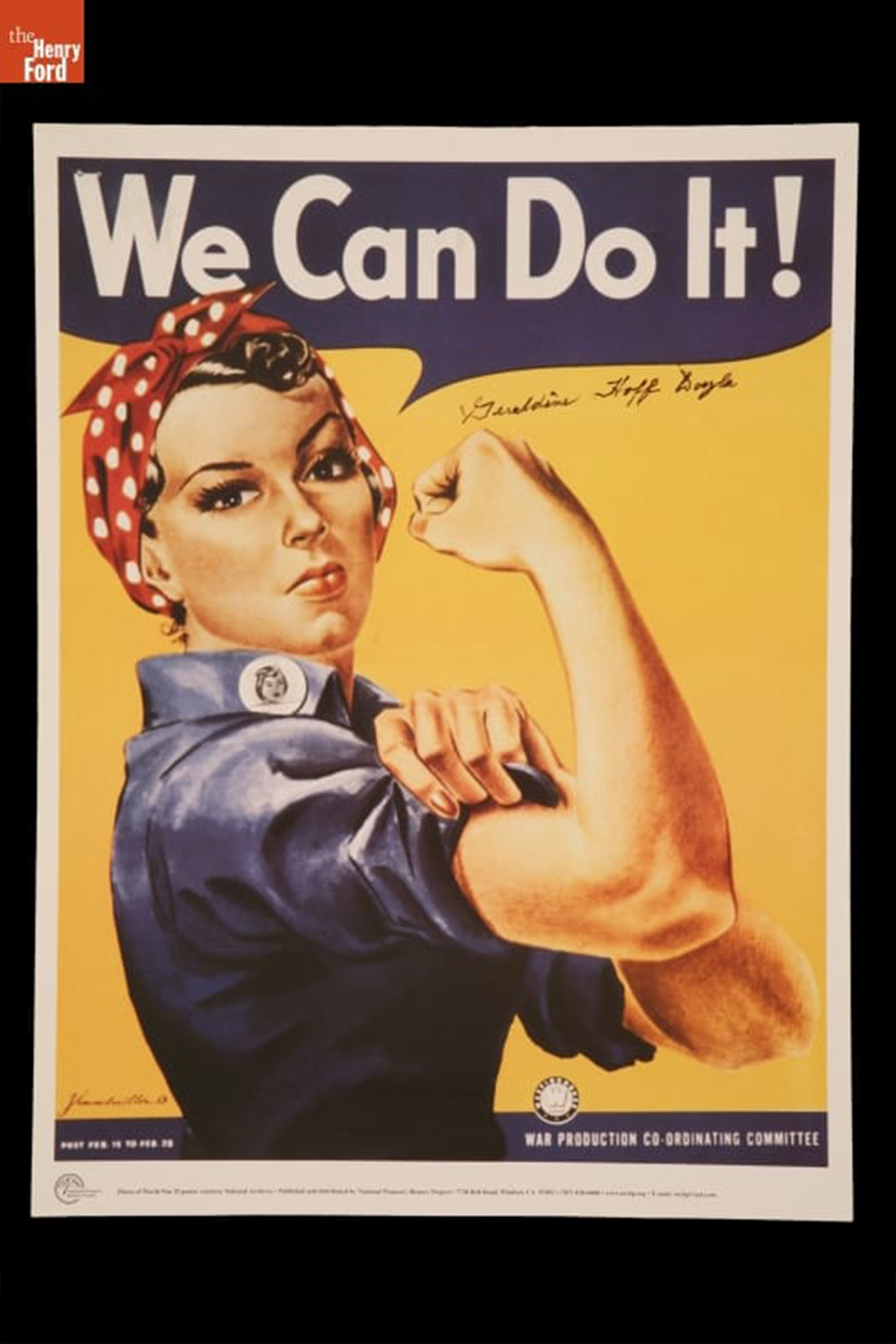
Reproduction World War II Poster, "We Can Do It!," 1998. / THF108519
Women across the country were inspired to join the ranks of Rosie but concerns over gender roles and domestic responsibilities discouraged others. However, as the war raged on and production needs continued to rise, the United States was faced with a manpower, or rather a womanpower, crisis.
Late in 1942, the War Manpower Commission announced a new campaign to recruit more women workers after estimating the majority of roughly five million new employees in 1943 would have to be women to keep up with war production demands. Ford Motor Company, placed at the center of the arsenal of democracy, was a leader in this campaign and shaping their facilities to attract more women to factory work.
Stories of real-life Rosies proved helpful in motivating others to find their place in Ford factories. These stories, documented by the Ford Motor Company Photographic Department, were distributed across the country to news publications large and small.
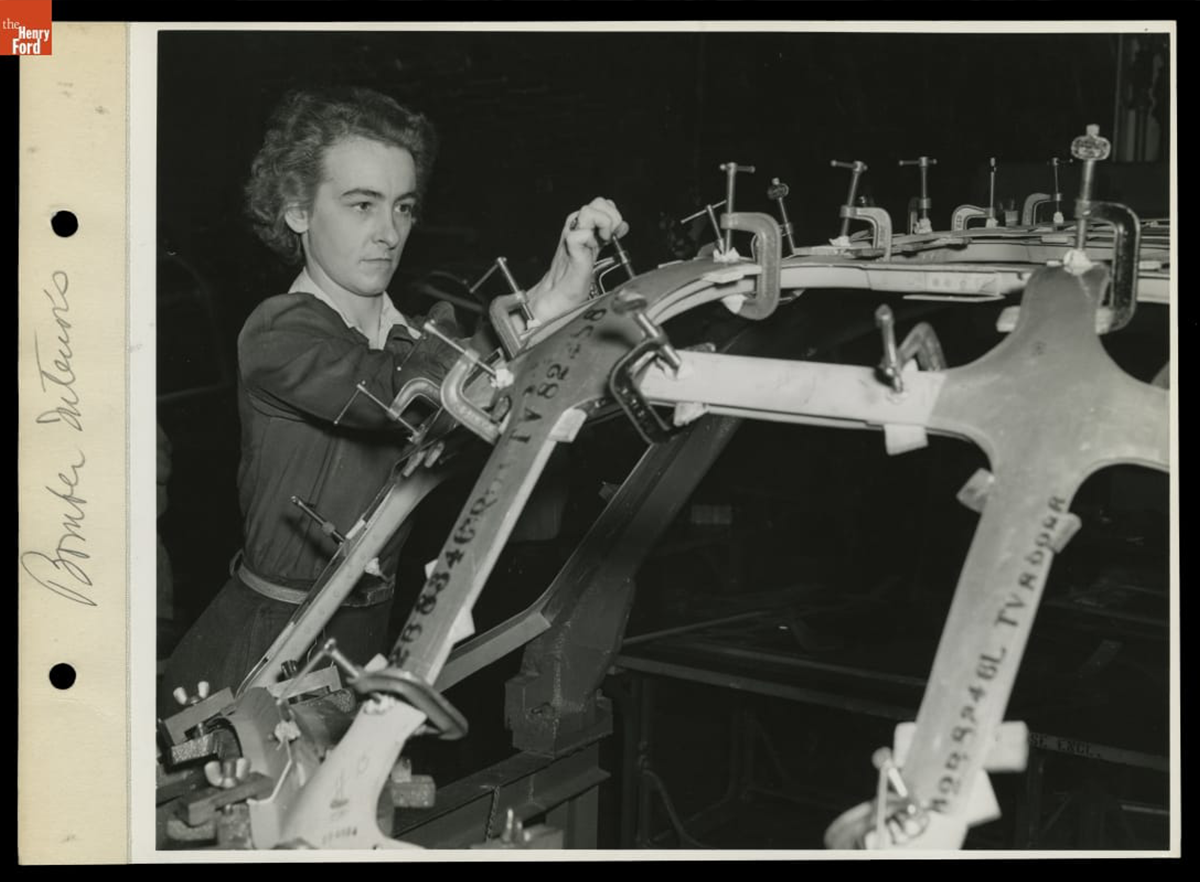
Riveter Florence Nightingale Working at Willow Run Bomber Plant, 1942. / THF93712
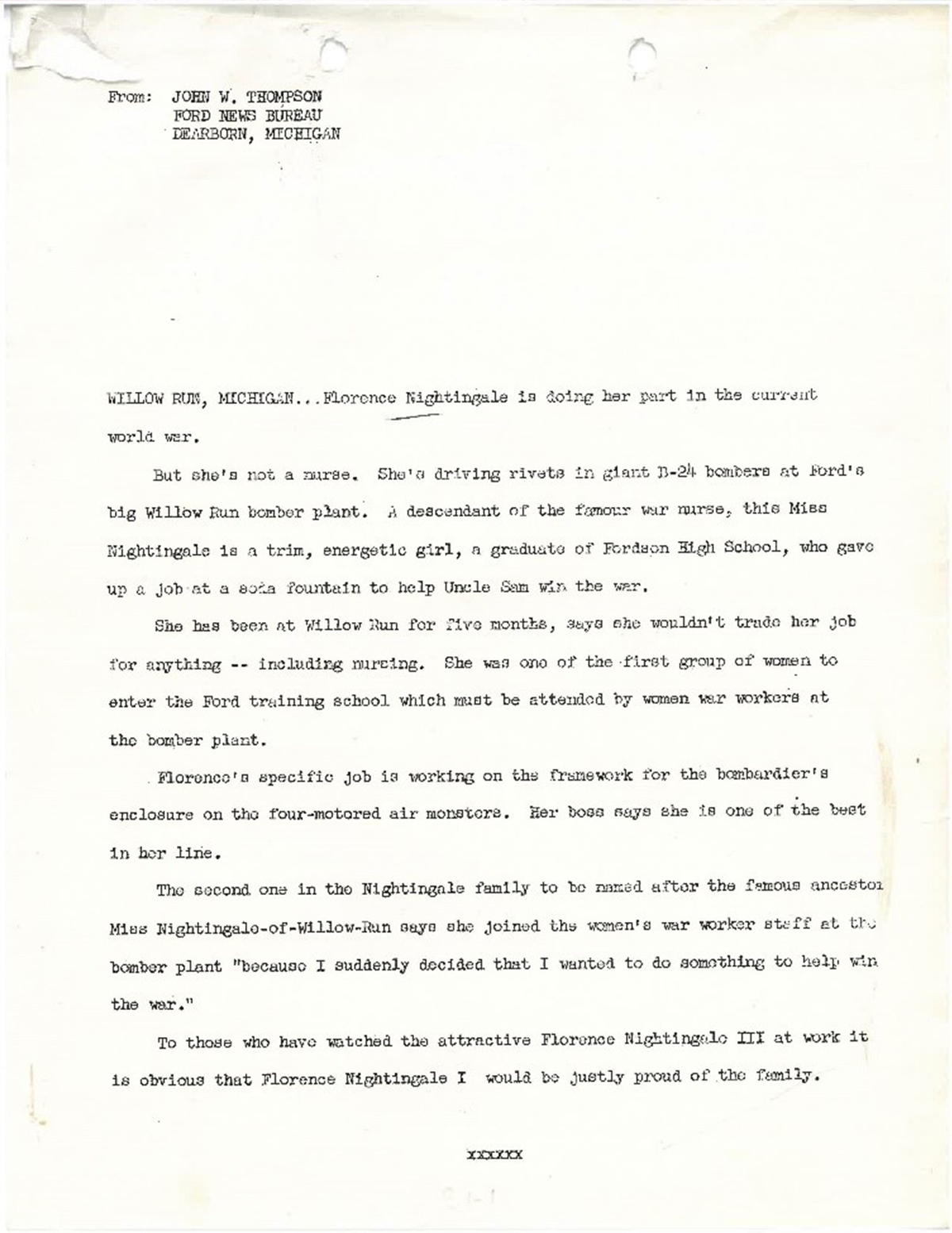
Florence Nightingale III Press Release, 1942. Accession 378, Box 30.
The story of Florence Nightingale III, descendant of the famous war nurse, was distributed locally and meant to recall the long-standing tradition of women’s contributions during wartime.
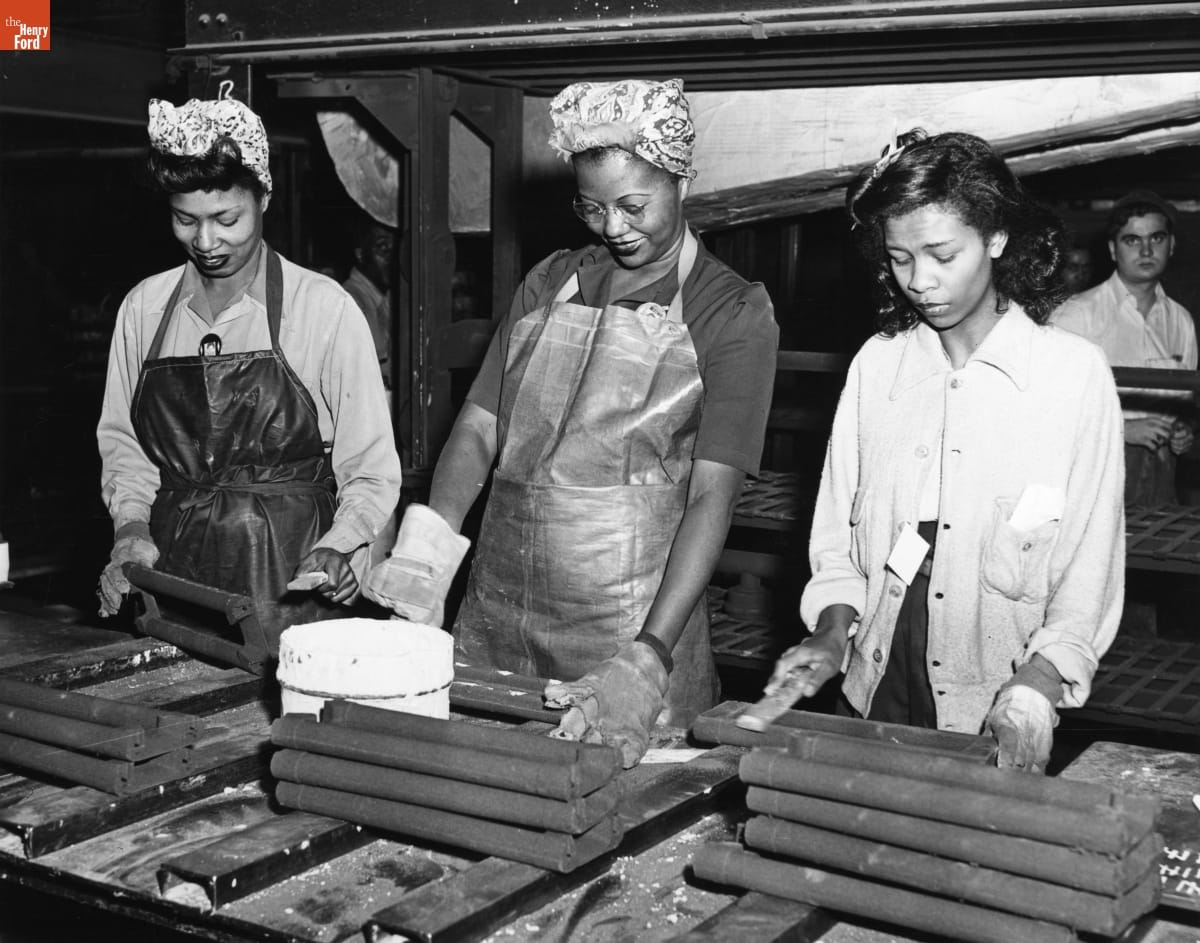
Women Making Sandcore Molds for Casting Cylinder Heads for Airplane Engines at the Ford Motor Company Rouge Plant, March 29, 1943. / THF82800
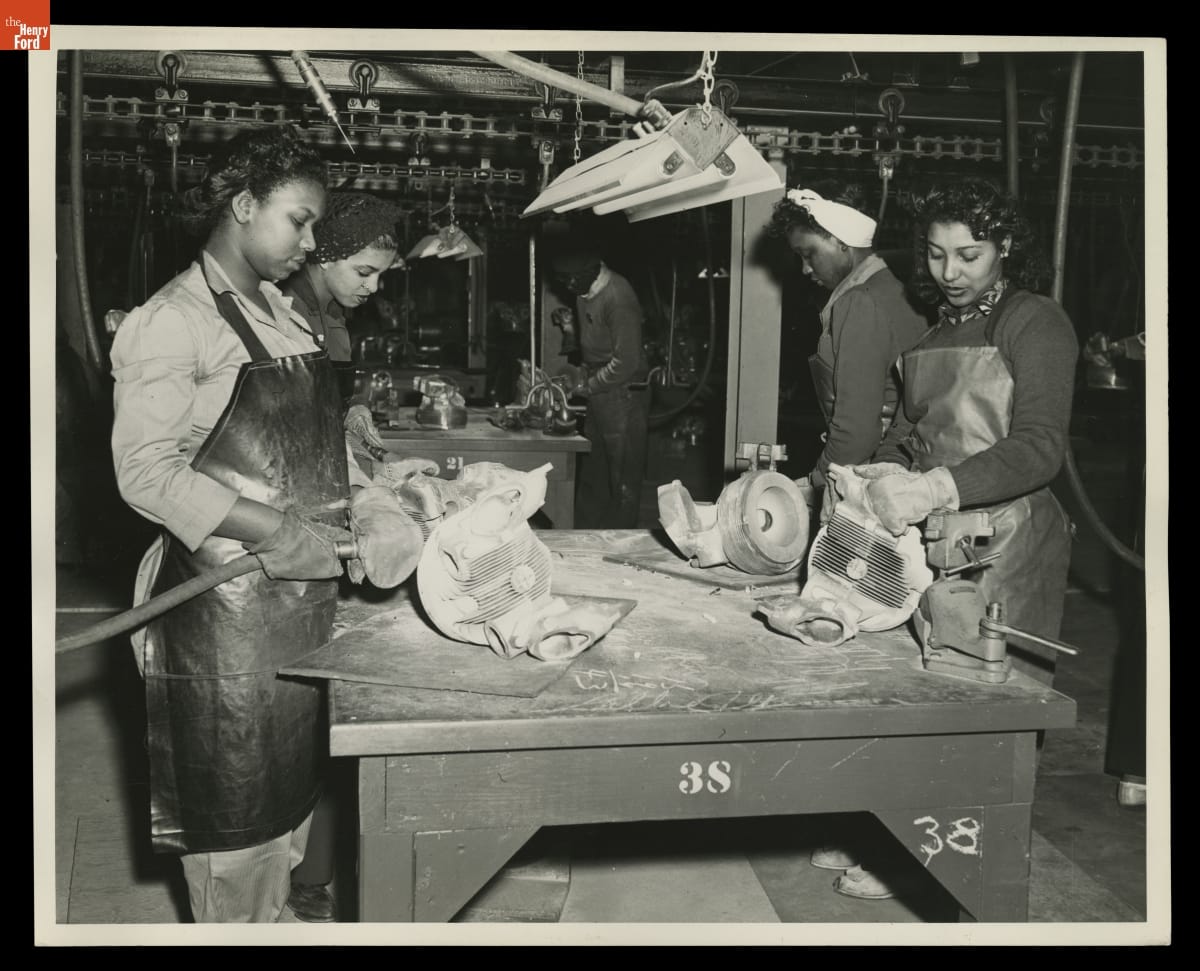
Women Making Sandcore Molds for Casting Pratt & Whitney Airplane Engine Cylinder Heads, Ford Rouge Plant, March 1943. / THF718497
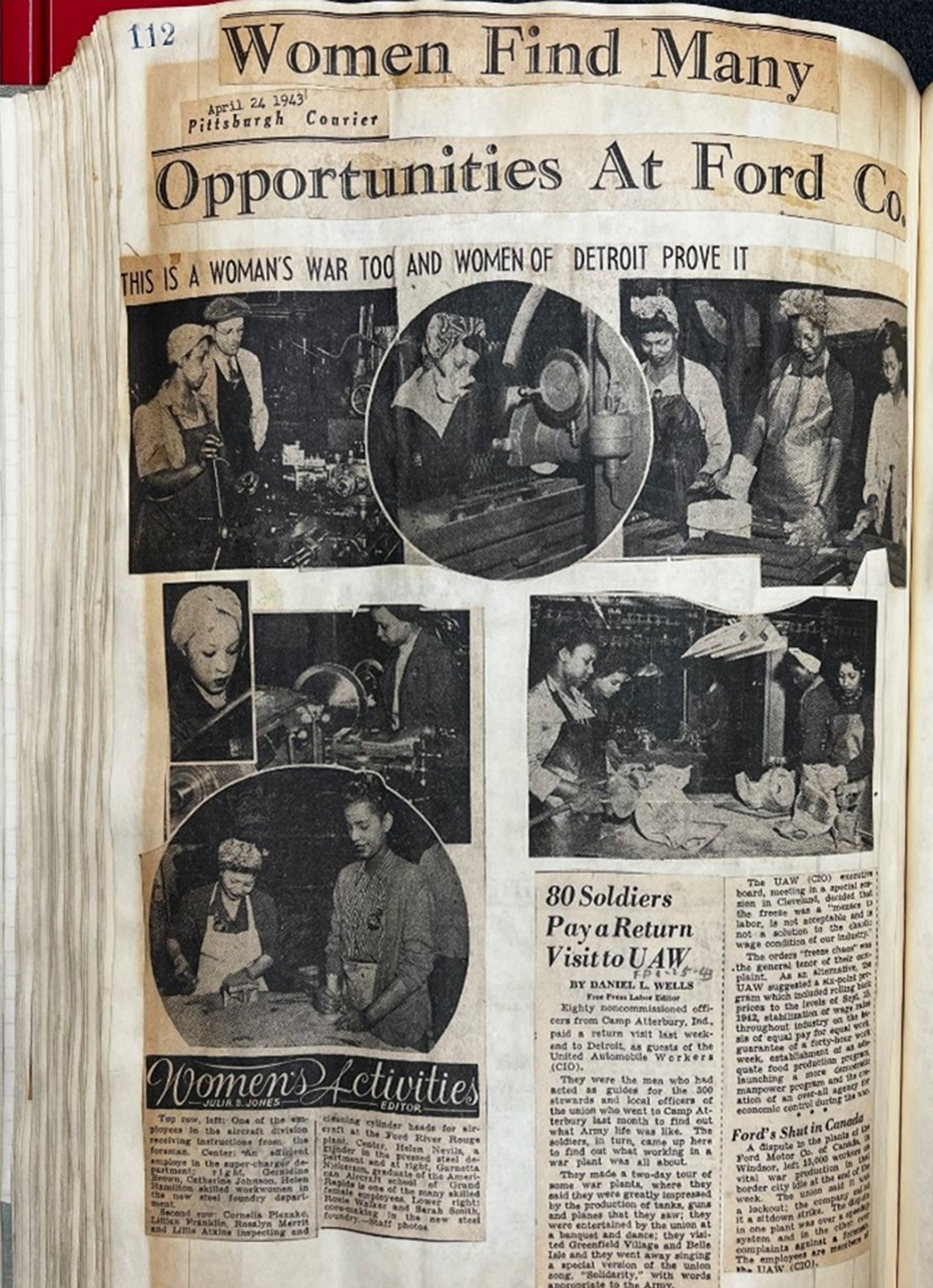
“Women Find Many Opportunities at Ford Co.,” Pittsburgh Courier, April 24, 1943. / Accession 7 Clipping Books Series, 1943.
A story on the women working at Ford Motor Company’s Rouge Plant was shared in the Pittsburgh Courier, highlighting the variety of jobs available to women and praising their skilled contributions to the war effort. Stories like this sought to encourage women to find work at Ford Motor Company and inspire efforts locally.
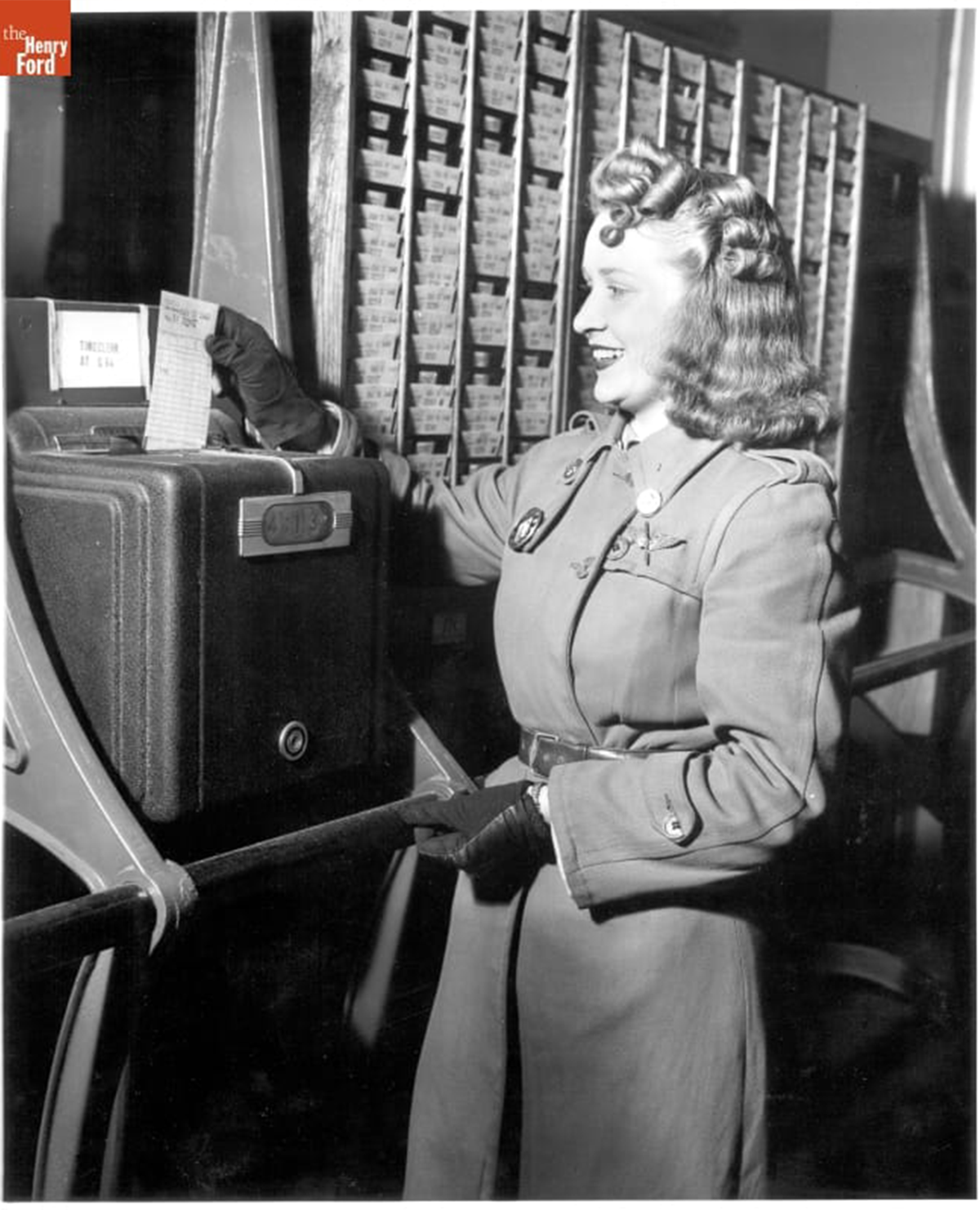
Norma Denton Using the Time Clock at Willow Run Bomber Plant, 1943. / THF23643

Norma Denton Atop an Airplane Assembly, February 1943. / THF326852
Norma Denton, a recent graduate, was featured in LOOK magazine, a popular and nationally distributed publication. Through a photo diary of her workday, part of a series titled Around the Clock Activities, Norma was photographed working, socializing, and enjoying the amenities of Ford Motor Company’s Willow Run plant. Her story aided in making wartime work more approachable and appealing to younger women.
While these special features brought some success, workforce demands persisted and required other innovative ways to draw the number of women workers needed to win the war. Following a visit to Ford’s facilities — likely related to research for his own wartime films — Walt Disney offered some creative suggestions to aid recruitment.
On February 18, 1943, Walt Disney wrote to John W. Thompson, Director of the Ford News Bureau, regarding an idea for a “Womanpower” movie. In his letter, Disney proposed a potential film aimed at attracting women to the factories by emphasizing women’s past contributions during wartime and highlighting the amenities offered to a modern industrial woman. Disney notes how much he enjoyed his visit to the Ford plant and his informal chat with Edsel Ford.
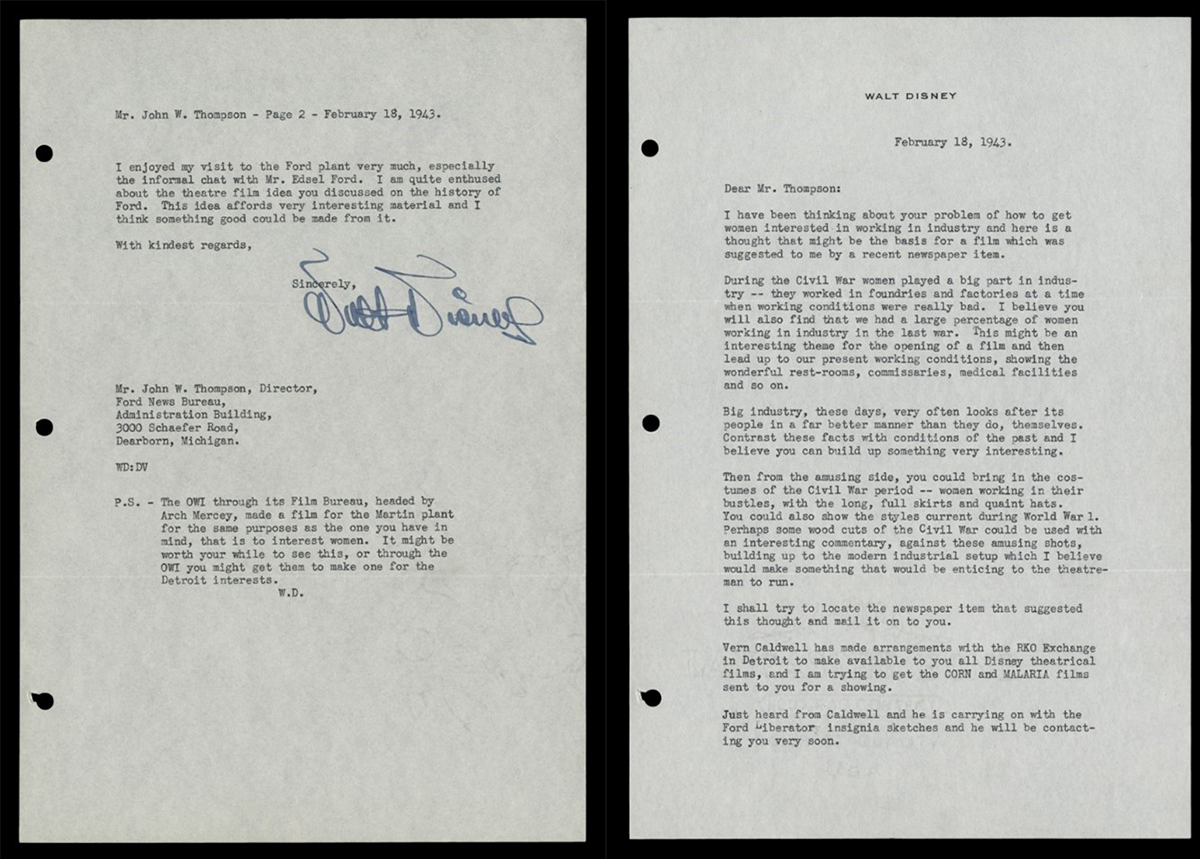
Letter from Walt Disney regarding Making a Ford Motor Company War Work for Women Film, February 18, 1943. / THF131114, THF131115
Edsel seemed to agree with Disney’s suggestion. In a memo from March 1943, he notes that in addition to regular press releases and housing improvements for women employees, a film is in production highlighting women working at Willow Run on aircraft assembly.
The ten-minute film, Women on the Warpath, aimed to inspire the next wave of women workers by recognizing the “American women everywhere, whose valor on the industrial front has sped the day of victory.” Previously, most women workers were young women or those who had traded traditional roles for higher paying factory jobs. The film makes an appeal to all women, including mothers and wives, that they are needed in the factories to help bring victory and their loved one's home. The film was distributed across the country with screenings in theaters and by a variety of women's clubs.
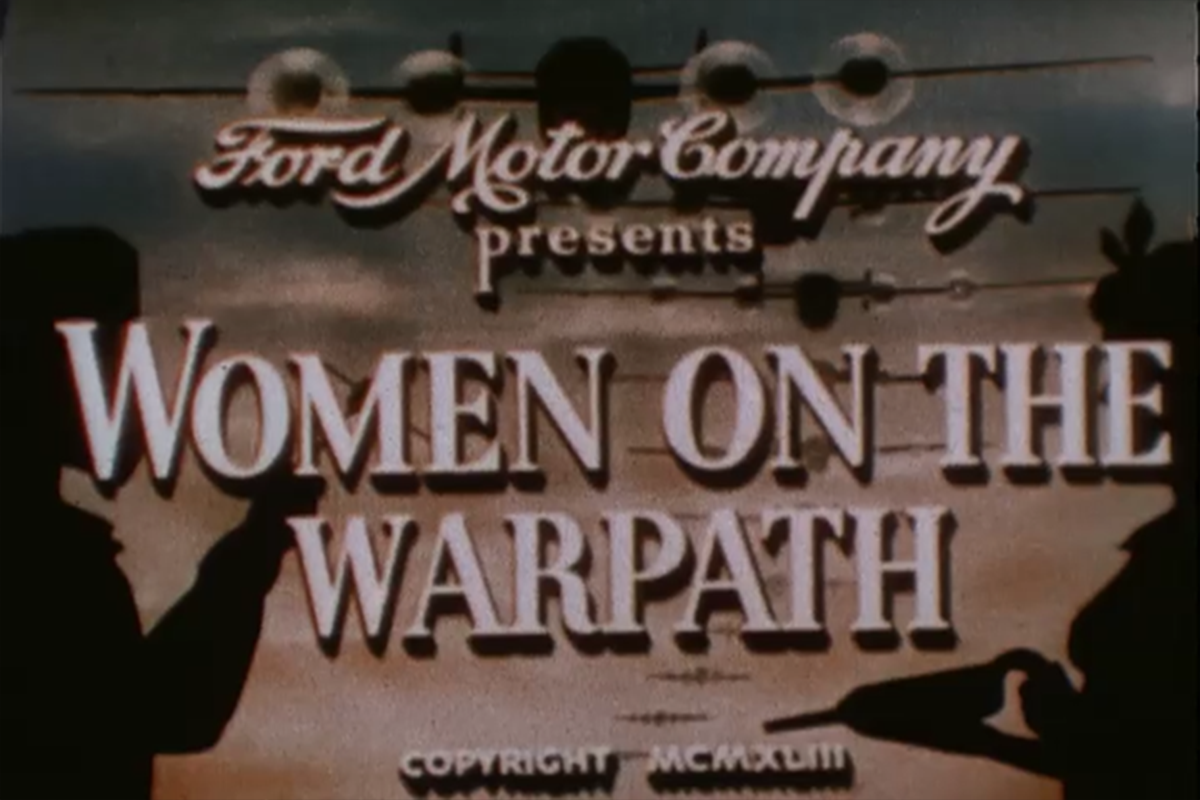
"Women on the Warpath," 1943. / Courtesy of the Ford Motor Company Collection and National Archives at College Park - Motion Pictures.
Ford Motor Company's efforts to recruit women workers proved victorious. During peak production, more than a third of their employees were women. As the war ended and men returned home to their jobs, many women returned to domestic roles seeing their work as a temporary patriotic contribution to help win the war. Others felt liberated from societal expectations and found a new sense of personal and economic freedom through working. It would take time before women represented a significant portion of the workforce in the same way, but the foundation had been laid for a more empowered and promising future.
Lauren Brady is Reference Archivist at The Henry Ford


Facebook Comments